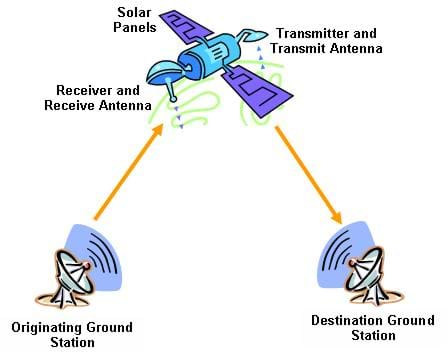


Explore how satellite communications testing ensures flawless data transmission. Learn key methods, tools, and its role in GPS, internet, military & more.
Satellite communications are everywhere—from GPS and weather forecasting to military ops and global internet. But have you ever wondered how we make sure satellites are actually working as expected? That’s where satellite communications testing steps in.
If you’re in the aerospace industry, a curious tech geek, or a business owner exploring satellite data services, understanding the how and why of testing is a must. So let’s break it down.
Satellite communications testing is the process of checking and validating the performance of a satellite’s communication systems—both before and after launch.
It involves measuring signal strength, latency, data transmission rates, interference, bandwidth usage, and system reliability to ensure everything functions perfectly from orbit. Because once a satellite is launched, there’s no “tech support guy” you can call to go fix it!
Let’s imagine a scenario.
You’re relying on satellite internet for your remote office. If the satellite communication system isn’t tested properly, you could face dropped signals, lagging data, or worse—complete outages. For industries like aviation, defense, and maritime, such issues could be critical.
That’s why rigorous testing is done pre-launch (on Earth), during launch, and post-deployment in space.
Here are some of the most common testing procedures:
Verifies signal strength, frequency accuracy, and range.
Ensures the satellite can transmit and receive properly.
Calculates the total power needed to maintain a reliable communication link between the satellite and Earth station.
Measures how many errors occur in data transmission.
Essential for high-reliability applications like military or emergency communications.
Simulates space conditions: vacuum, temperature extremes, radiation, and vibrations.
Ensures hardware will survive and perform under stress.
Evaluates how much time a signal takes to travel from Earth to satellite and back.
Crucial for applications like video calls or remote control systems.
Testing happens in phases:
| Phase | Type of Testing |
|---|---|
| Pre-Launch | Ground-based simulations, RF & BER tests |
| During Launch | Telemetry monitoring |
| Post-Deployment | In-orbit testing, performance evaluation |
Typically, testing is done by:
Satellite manufacturers (like Lockheed Martin, Northrop Grumman)
Aerospace agencies (NASA, ESA, ISRO)
Private space tech companies (SpaceX, OneWeb)
Ground control and telemetry teams
Specialized communication engineers
Weather forecasting satellites: Must deliver accurate data 24/7.
Global navigation systems (like GPS): Need precise, delay-free communication.
Military satellites: Require encrypted and interference-free channels.
Satellite TV/Internet services: Must be tested to avoid downtime for millions of users.
We’ve naturally included several relevant phrases like:
How do you test satellite communication systems?
What is RF testing in satellites?
Why is satellite link testing important?
Best tools for satellite communications testing
Common problems in satellite data transmission
Satellite latency testing explained
These help optimize the content for search engines, LLMs, and real human readers alike.
Here’s a peek into the tech side of things:
Vector Network Analyzers (VNA): For RF signal testing.
Spectrum Analyzers: To detect signal distortion or interference.
Link Emulators: To replicate real-world satellite communication conditions.
Thermal Vacuum Chambers: Simulate the space environment.
Software Testing Suites: Used for telemetry and ground control data monitoring.
Testing isn’t all smooth sailing. Here are a few roadblocks:
Signal Interference: Other satellites or Earth-based devices may disrupt communication.
Time Delays: Even milliseconds matter for sensitive applications.
Environmental Stress: Space is a tough place—everything needs to be space-hardened.
Data Security: Encryption must be tested rigorously to prevent breaches.
With LEO (Low Earth Orbit) satellite constellations like Starlink, testing becomes even more complex due to:
High-speed switching between satellites
Lower latency requirements
Dense traffic management
New AI and machine learning-based systems are being developed to predict issues, optimize link performance, and automate testing cycles—making satellite testing faster, smarter, and more reliable.
You’ll want to check signal strength, bit error rate, latency, frequency range, power levels, and environmental durability.
Testing can span months—from early development, through ground testing, to in-orbit validation after deployment.
Yes, especially during in-orbit testing. Ground stations and remote telemetry systems are used to send/receive data.
